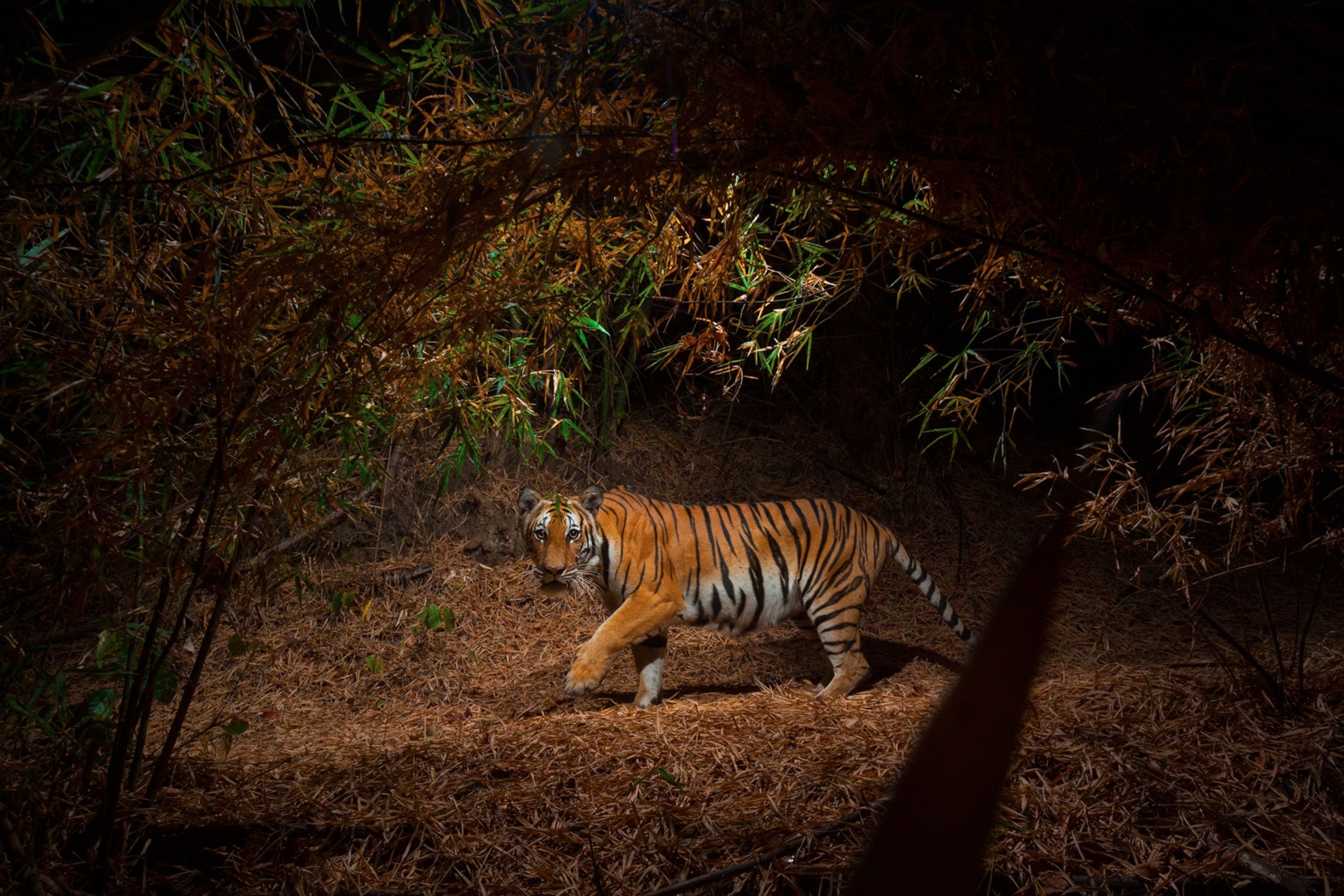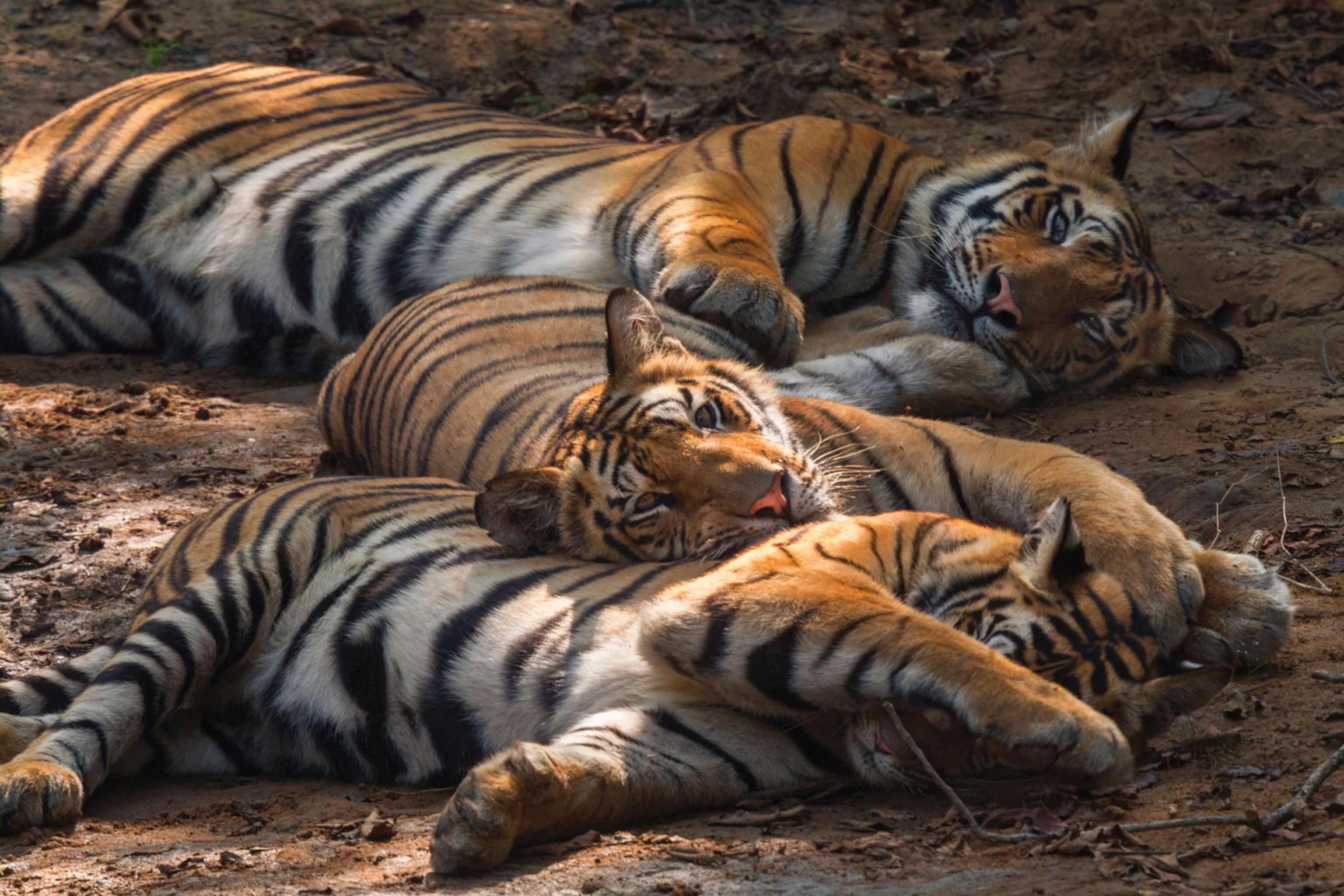














Our Favorite Tiger Photos Show Their Power and Beauty
On International Tiger Day, see how a photographer and conservationist is trying to preserve big cats for future generations.
The most meaningful photographs are the ones that incite change. Photographer and big cat advocate Steve Winter hopes to inspire conservation efforts through his photographs of tigers, to preserve them in the wild for generations to come.
The tiger is critically endangered with only about 3,890 tigers left in the wild. Habitat loss and retaliatory killings are major factors in the loss of tigers throughout Asia. However, the largest threat comes from poachers who target tigers to sell their “parts” for tiger bone wine and tiger skin furniture to harness the mystical powers of the large cat.
“We have no reason to use parts of an endangered species,” said Winter, “The only way you are going to gain any strength or chi of a tiger is to look one in the eye.”
Winter has spent years photographing tigers throughout Asia. He spends more time with the large cat than any other animal on the face of the earth. In honor of International Tiger day, Winter discusses his love for tigers and the urgent need to protect this large cat.
What is so fascinating about tigers?
They have this certain majesty about them. When you look into their eyes you can’t help but be in awe and be moved emotionally. And I have been lucky enough to be around them in places where I can see them and then in other places where I could not see them where you could only get pictures with remote cameras.
What are some of the challenges you face when photographing tigers?
We don’t need pretty pictures. Pretty pictures aren’t going to save tigers. We have so many pictures of tigers how are we going to show them in a different light? My goals are to get pictures people haven’t seen before. If we can get something that excites people than that’s good. It’s a positive step towards getting people to not forget about this magnificent species.
Can you describe what it is like to see a tiger in its natural environment in the jungle?
It takes your breath away. Number one it’s their size, their coloring their stripes. But it’s those eyes. The eyes of the tiger are just piercing eyes that look into us. It’s breath taking when you come around the corner in a forest and you see a tiger or you hear one.
What is the story you want your pictures to tell?
Well, you want [viewers] to have a visceral emotional connection to that photograph. Because in the end these cats are in trouble. I want people to care that there will be tigers in the future. The next generations deserve to have tigers also and they are being threatened for ridiculous, greedy reasons. [The practice of killing them for] tiger bone wine, tiger skin furniture, tiger bone medicine, it’s wrong and it needs to be stopped. And so hopefully they will see something and make them want to know more. How are tigers doing, not well. But I know that we can save them.
This interview was edited for length and clarity.
You May Also Like
Go Further
Animals
- Octopuses have a lot of secrets. Can you guess 8 of them?
- Animals
- Feature
Octopuses have a lot of secrets. Can you guess 8 of them? - This biologist and her rescue dog help protect bears in the AndesThis biologist and her rescue dog help protect bears in the Andes
- An octopus invited this writer into her tank—and her secret worldAn octopus invited this writer into her tank—and her secret world
- Peace-loving bonobos are more aggressive than we thoughtPeace-loving bonobos are more aggressive than we thought
Environment
- This ancient society tried to stop El Niño—with child sacrificeThis ancient society tried to stop El Niño—with child sacrifice
- U.S. plans to clean its drinking water. What does that mean?U.S. plans to clean its drinking water. What does that mean?
- Food systems: supporting the triangle of food security, Video Story
- Paid Content
Food systems: supporting the triangle of food security - Will we ever solve the mystery of the Mima mounds?Will we ever solve the mystery of the Mima mounds?
- Are synthetic diamonds really better for the planet?Are synthetic diamonds really better for the planet?
- This year's cherry blossom peak bloom was a warning signThis year's cherry blossom peak bloom was a warning sign
History & Culture
- Strange clues in a Maya temple reveal a fiery political dramaStrange clues in a Maya temple reveal a fiery political drama
- How technology is revealing secrets in these ancient scrollsHow technology is revealing secrets in these ancient scrolls
- Pilgrimages aren’t just spiritual anymore. They’re a workout.Pilgrimages aren’t just spiritual anymore. They’re a workout.
- This ancient society tried to stop El Niño—with child sacrificeThis ancient society tried to stop El Niño—with child sacrifice
- This ancient cure was just revived in a lab. Does it work?This ancient cure was just revived in a lab. Does it work?
- See how ancient Indigenous artists left their markSee how ancient Indigenous artists left their mark
Science
- Do you have an inner monologue? Here’s what it reveals about you.Do you have an inner monologue? Here’s what it reveals about you.
- Jupiter’s volcanic moon Io has been erupting for billions of yearsJupiter’s volcanic moon Io has been erupting for billions of years
- This 80-foot-long sea monster was the killer whale of its timeThis 80-foot-long sea monster was the killer whale of its time
- Every 80 years, this star appears in the sky—and it’s almost timeEvery 80 years, this star appears in the sky—and it’s almost time
- How do you create your own ‘Blue Zone’? Here are 6 tipsHow do you create your own ‘Blue Zone’? Here are 6 tips
Travel
- This town is the Alps' first European Capital of CultureThis town is the Alps' first European Capital of Culture
- This royal city lies in the shadow of Kuala LumpurThis royal city lies in the shadow of Kuala Lumpur
- This author tells the story of crypto-trading Mongolian nomadsThis author tells the story of crypto-trading Mongolian nomads
- Slow-roasted meats and fluffy dumplings in the Czech capitalSlow-roasted meats and fluffy dumplings in the Czech capital




